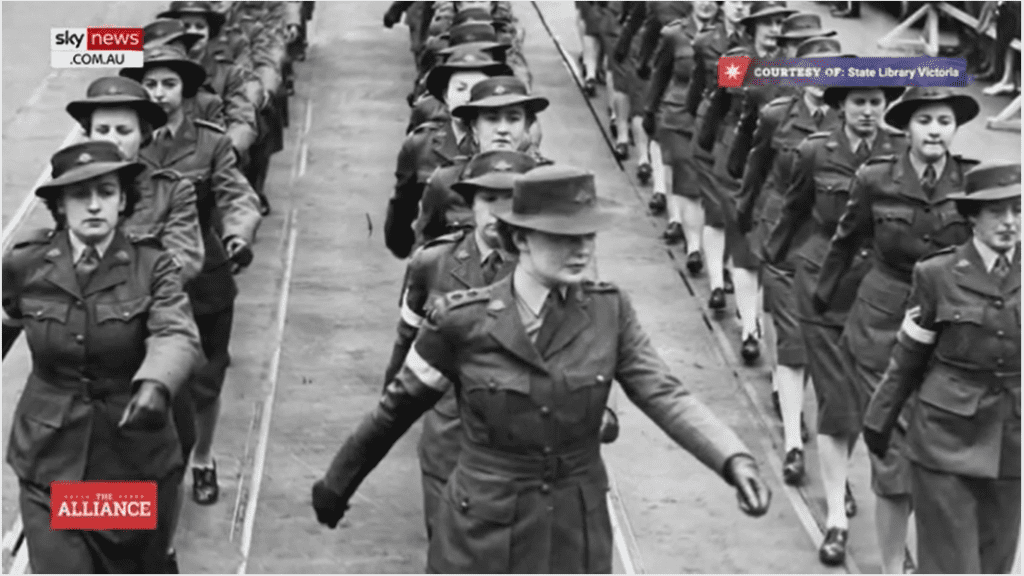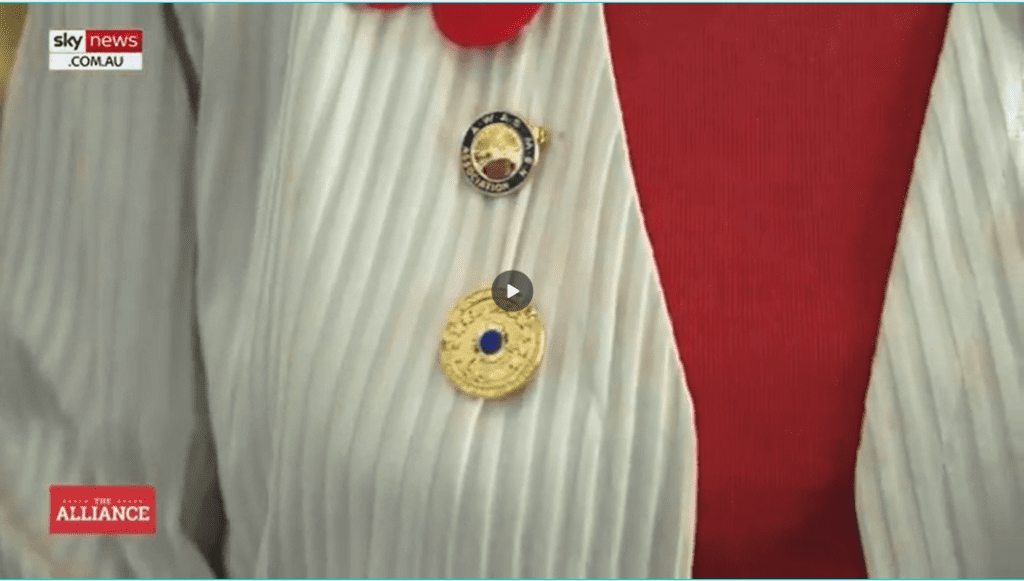ANZAC Village, Narrabeen resident Marion Painter has featured in Sky News documentary, The Alliance, about her time as a code breaker in World War 2 (WW2). The Alliance examines how the relationship between the US and Australia has been forged and the key people and events key to its success throughout the past 100 years.
Marion’s early years – A born retailer
Marion says her parents had always encouraged her and her siblings to be independent. As a young girl she had a burning desire to either be an actress, or a nun. “Mum said, darling, I don’t think either of those are going to suit you, and I don’t think they pay much, I’d settle for something else”, said Marion. At the age of 14, she applied for a job at a department store, and was offered a job for the five-day Christmas period. “I knew from my very first day that this was what I wanted to be. I wanted to be a retailer,” said Marion.
Instead of filling in for five days, Marion stayed for six weeks, and when it came time to return to school, she was able to persuade her mother, with the help of the Store Manager, to allow her to stay on at the store, rather than returning to school – much to the headmistress’s disapproval who thought leaving school at 14 was ‘disgusting’.
“I stayed on at the store. By the time I was 17 or so I was in charge of the millinery department. All the other managers were in their 40s or 50s! I don’t think there was a day ever in my work life, and it’s been a long journey, that I haven’t loved the work I’ve done. It wasn’t like a job, it was like being an actress; it was like being on the stage,” said Marion.
Joining the war effort
In 1942, Marion recalls how horrendous the war was, and the burning desire she had to contribute, so at the age of 19 she enlisted in the Australian Women’s Army Service (AWAAS).
“I had a brother 8, a sister 11 and one sister just married and I felt very badly that there was no one in my family who could contribute in any way,” said Marion. At lunchtime I said to Mummy “Guess what I’ve done today”. I said “I’ve enlisted in the Army. I thought she was going to drop dead!”
Marion was sent to Ingleburn for training, before being sent on a train to Albury in the middle of the night, aware Japanese were listening from behind the trees at the railway station.
After spending 11 months in a camp in Albury, Marion was among a select group of AWAAS women sent to Kalinga, near Brisbane.

Learning Japanese morse code
We were told to forget everything we’d learnt – we’d need to learn Japanese Kana, a completely different form of Morse, explained Marion.
“It was very difficult really because their Morse is in in groups of letters, whereas our is abc. It was difficult; we had about 8 weeks to learn it before we went on the machines,” she recalls.
Marion says the training was so secretive she couldn’t even talk about it amongst the other women.
Working as a code breaker
“We had 2 operators and a cylinder each four-hour shift. As soon as the officer in charge of the shift heard the signal he was listening for, he would pick up the station, we’d put our headphones on, switch on the cylinder, and take down what we heard. If we missed something – it was very fast, very fast Morse – the cylinder also took what it heard.
So the cylinder and our ideas of what that message was were then sent by motorbike to Macarthur’s headquarters in Brisbane. If they couldn’t decode it, it would be sent to Bletchley Park, England.”
Marion recalls how tense her work as a code breaker was, constantly told before her shifts that the work was not a game, how important it was and the impact it could mean. Marion worked 4-hour shifts, requiring intense focus with this ‘fast noise in your brain’ she recalls.
“We’d get up at 12 o’clock to go on duty or 4 o’clock in the morning, that’s what we were there for, so we didn’t mind at all. But many was the night that I’d come off shift, get in the bath and fall asleep. One of the girls would knock on the door and say, “are you asleep again in there?” “and I would be,” she said.

How code breakers provided key intelligence
In Sky News’ The Alliance, Professor John Blaxland, Head of The Strategic Defence Studies Centre at ANU explains how impactful the work of the AWAAS code breakers was during WW2.
“The work they did had a transformative effect in terms of the ability of the allies to push back, to turn the tide on the Japanese both in the Battle of the Coral Sea in April 1942 and in the following month in the Battle of Midway in May 1942,” he said.
Marion’s achievements recognised after 60 years
For Marion, doing her part during the war was what drove her. “I was so intent on winning the war at that stage – I really thought I’m here for a purpose and I’ve got to find something that will make a difference, Marion told Sky News in The Alliance.
It would be 60 years after the end of WW2 until Marion’s efforts were formally recognised, with a letter and medal sent from the British Prime Minster. “As an outpost to Bletchley Park, the work we did was invaluable – we had shortened the war in the Pacific by 2 years,” an emotional Marion told Sky News. Her medal, a possession Marion wears with pride is inscribed with ‘We also served’.
Loving life at the War Vets
Marion has lived at ANZAC village for 24 years after working in retail until the age of 71. “My daughter said one day, “Mum you can’t work forever” says Marion, but I’d have liked to. Recently widowed, Marion met her late husband Dennis at RSL LifeCare and they enjoyed 18 years of marriage. “It’s been marvellous,” she says.
Sky News’ episode of The Alliance, featuring Marion Painter can be viewed here
Continue Reading
Discover our Services
Home Care
Retirement Living
Residential Care
Veteran Services
Download a brochure
We'll never share your email address and you can opt out at any time, we promise


